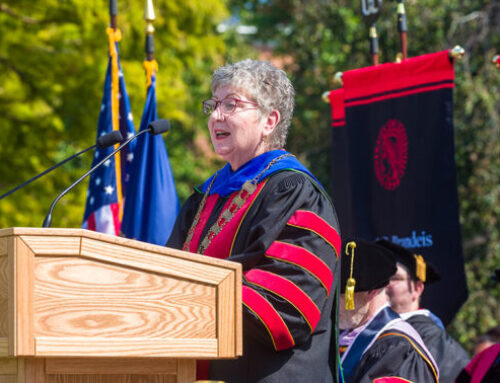Students both required to live on campus and exposed to ethical hazard
“How do you like your U of L dorm?”
“It’s growing on me.”Bada-bing.
It would be easy to take a few cheap shots at the University of Louisville for the recent mold problems on campus that led to the relocation of hundreds of students in the middle of their mid-term exams.
It would be easy to say that U of L’s record amount of private funds is being misdirected, noting that the U of L Board of Trustees and the Council on Postsecondary Education approved a plan to build a $38 million, 128,000-square-foot student recreation center, and that U of L sold $37.5 million in tax-exempt bonds to finance construction of the project.
We could argue that U of L should spend more on maintenance and less on new structures, and talk about the $31 million road project that will provide access to a 39-acre area that university officials plan to develop into the Belknap Engineering and Applied Sciences Research Park, of which U of L Foundation provided $6.2 million and the state provided $24.8 million.
As easy as they might be, they aren’t fair arguments against the university. Although mold doesn’t happen overnight, the University of Louisville’s spending record is proof enough that the intent of the U of L Foundation and Board of Trustees is to provide high-quality facilities for campus living. If anything, their securing funds for future construction proves their interests lie in creating the type of livability that keeps students in class and paying tuition. We’re a growing campus, and in the last 10 years the physical presence of this university has inarguably improved.
Accidents happen even to the best of us. In 2010, Columbia University was responsible for buildings that were found to have both mold and vermin. Responsible institutions do what they can to prevent accidents, apologize for their occurrence and rectify the situation by providing restitution to the effected and by preventing the same mistake from happening again.
U of L’s mold accident doesn’t so much highlight the flaws in U of L’s investment strategy as it does in their policy. Forget the cheap shots; here’s the real problem: requiring students to live on campus in these facilities per the First Year Live On policy. Because they cannot guarantee that accidents like these won’t happen, it is unethical for U of L to take away a student’s right to make their own informed choice of residence. Beyond that, First Year Live On is an incredibly infantilizing policy that should offend anyone old enough to sign a lease.
Forcing freshmen to live on campus their first year allows U of L to guarantee a yearly dollar amount to the private companies that own, construct and lease the buildings. This is the same principle as the student meal plan: to entice companies like Subway to set up shop, U of L guarantees a dollar amount via their mandatory meal plan.
On both the housing and food level, it is unethical for U of L to contribute to an inflating student loan bubble by taking federal student loan dollars (which you’ll have to pay back later) and giving them to private companies, particularly when the quality of the product is forever in question. I think that’s worth repeating: at U of L you are essentially a conduit through which private companies are able to access public money.
Regardless of how much money U of L invests in new construction projects, and regardless of how fantastically they may maintain the older buildings, the argument remains the same: if the housing options were as great as U of L says they are, U of L wouldn’t have to force you to live there. That they do should call both their motives and capacity into question, and rightly invites the extreme criticism of anyone unfortunate enough to have to move into — or out of — Mold Hall.
[email protected]
Photo: Tricia Stern/The Louisville Cardinal







